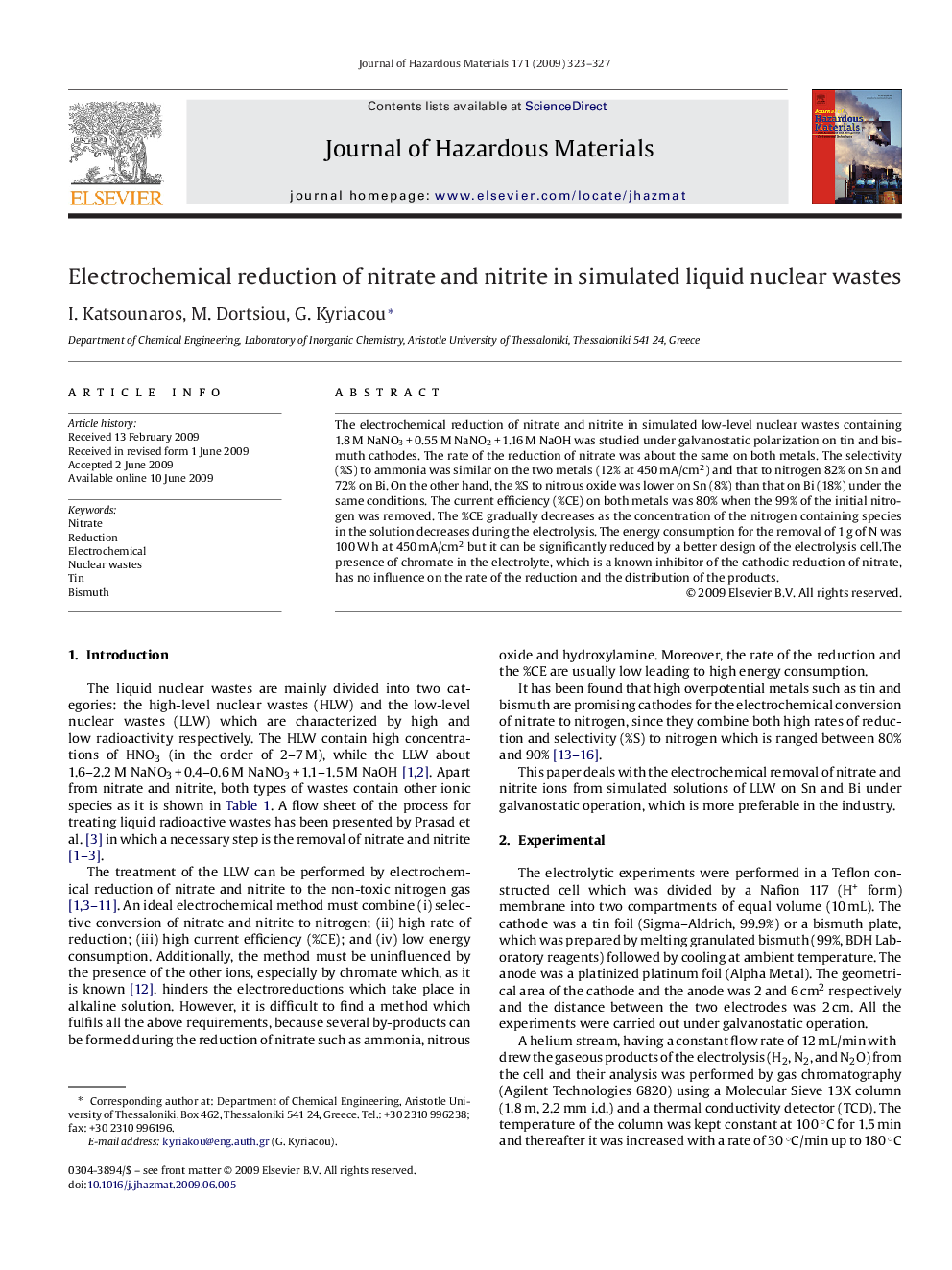| Article ID | Journal | Published Year | Pages | File Type |
|---|---|---|---|---|
| 581139 | Journal of Hazardous Materials | 2009 | 5 Pages |
Abstract
The electrochemical reduction of nitrate and nitrite in simulated low-level nuclear wastes containing 1.8Â M NaNO3Â +Â 0.55Â M NaNO2Â +Â 1.16Â M NaOH was studied under galvanostatic polarization on tin and bismuth cathodes. The rate of the reduction of nitrate was about the same on both metals. The selectivity (%S) to ammonia was similar on the two metals (12% at 450Â mA/cm2) and that to nitrogen 82% on Sn and 72% on Bi. On the other hand, the %S to nitrous oxide was lower on Sn (8%) than that on Bi (18%) under the same conditions. The current efficiency (%CE) on both metals was 80% when the 99% of the initial nitrogen was removed. The %CE gradually decreases as the concentration of the nitrogen containing species in the solution decreases during the electrolysis. The energy consumption for the removal of 1Â g of N was 100Â WÂ h at 450Â mA/cm2 but it can be significantly reduced by a better design of the electrolysis cell.The presence of chromate in the electrolyte, which is a known inhibitor of the cathodic reduction of nitrate, has no influence on the rate of the reduction and the distribution of the products.
Related Topics
Physical Sciences and Engineering
Chemical Engineering
Chemical Health and Safety
Authors
I. Katsounaros, M. Dortsiou, G. Kyriacou,
